
Boiler manufacturers, suppliers head for the Rockies! Read our event preview. See pg. 22




















































Boiler manufacturers, suppliers head for the Rockies! Read our event preview. See pg. 22
























































Greenheck’s eCAPS® Bridge for Revit® plugin provides access to the most complete catalog of HVAC LOD 200 and 300 product content - without leaving Revit®
Download eCAPS® Bridge for Revit® here: greenheck.com/revit













We saw the stricter requirements of 2023 as an opportunity to really flex our innovation muscles. And our Endeavor ® Line of furnaces, air conditioners and heat pumps have caused quite a stir by easily meeting the new efficiency standards without growing in size or sacrificing performance—while being some of the quietest models available. We know there’s nothing in the new regulations about making them quieter—we just figured you’d appreciate the sound of a job well done.




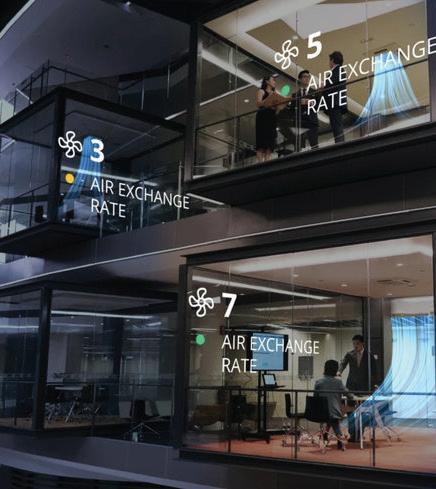
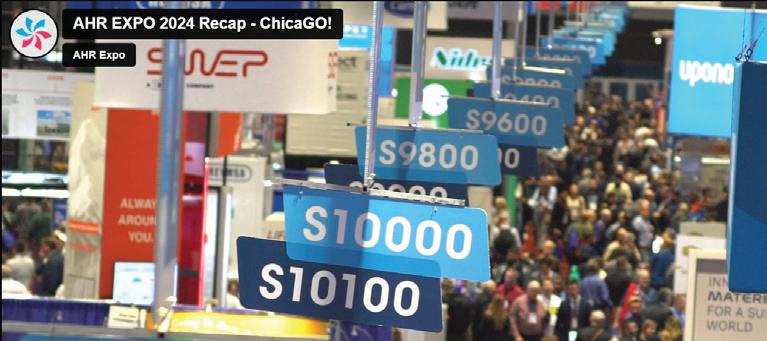



IL 60065-3257. Customer service can be reached toll-free at 877-382-9187 or at HPACengineering@omeda.com for magazine subscription assistance or questions. Printed in the USA. Copyright 2024 Endeavor Business Media, LLC. All rights reserved. No part of this publication may be reproduced or transmitted in any form or by any means, electronic or mechanical, including photocopies, recordings, or any information storage or retrieval system without permission from the publisher. Endeavor Business Media, LLC does not assume and hereby disclaims any liability to any person or company for any loss or damage caused by errors or omissions in the material herein, regardless of whether such errors result from negligence, accident, or any other cause whatsoever. The views and opinions in the articles herein are not to be taken as official expressions of the publishers, unless so stated. The publishers do not warrant either expressly or by implication, the factual accuracy of the articles herein, nor do they so warrant any views or opinions by the authors of said articles.




































From the world’s #1 air conditioning company, discover the cloud connected benefits of VRV EMERION provided by Daikin’s HERO Cloud Services.

HPAC ‘On The Air’: ASHRAE’s Next Generation, with YEA’s Top Leaders
*NEW PODCAST* The challenges facing young engineers today may be more complex than ever, but our guests this month reassure us that the energy, skills, and organization are coming together to meet them head on. www.hpac.com/21283852

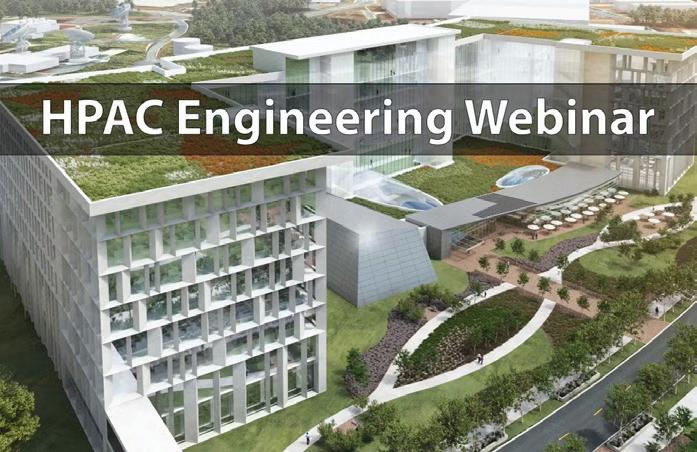
ASHRAE 90.1-2022: The Path to Net Zero Buildings *ON-DEMAND WEBINAR* Recorded Dec. 5, this timely tutorial details how best to employ the new ASHRAE standard to achieve net zero energy use. www.hpac.com/21276887
HPAC 2024: Our March Quiz!
Diving deeper into our own history, let’s look at some HPAC milestones over the last 95 years...
www.hpac.com/21283601



Fifty years ago, we handed out HPAC bats and encouraged advertisers to “reach the heavy hitters.” Today, as we near our 95th birthday, we look back on some of our rich history. www.hpac.com/21283984
EDITORIAL OFFICE
8001 Lincoln Ave. • Suite 720
Skokie, IL 60077 www.hpac.com
EXECUTIVE TEAM
CEO: CHRIS FERRELL
PRESIDENT: JUNE GRIFFIN
COO: PATRICK RAINS
CRO: PAUL ANDREWS
CHIEF DIGITAL OFFICER: JACQUIE NIEMIEC
CHIEF ADMINISTRATIVE AND LEGAL OFFICER: TRACY KANE
EVP, GROUP PUBLISHER –BUILDINGS/LIGHTING/DIGITAL INFRASTRUCTURE: TRACY SMITH
EDITORIAL CONTACTS
MIKE EBY
Group Editorial Director meby@endeavorb2b.com
ROB MCMANAMY Editor-in-Chief rmcmanamy@endeavorb2b.com
DAVID ECKHART Art Director deckhart@endeavorb2b.com
SALES CONTACTS
MIDWEST
BILL BOYADJIS 973-829-0648 bboyadjis@endeavorb2b.com
SOUTH & WEST
RANDY JETER
512-263-7280 • Fax: 913-514-6628 rjeter@endeavorb2b.com
EAST BRIAN SACK 732-629-1949 bsack@endeavorb2b.com
WEST ELLYN FISHMAN 949-239-6030
efishman@endeavorb2b.com
CLASSIFIEDS/INSIDE SALES
STEVE SUAREZ 816-588-7372 ssuarez@endeavorb2b.com
DIRECTOR OF SALES JOE AGRON 941-200-4778 jagron@endeavorb2b.com
LIST RENTAL SMART REACH sr-assets@endeavorb2b.com effective
PRODUCTION AND CIRCULATION
RITA FITZGERALD Senior Production Manager rfitzgerald@endeavorb2b.com
JAMES MARINACCIO Audience Marketing Manager jmarinaccio@endeavorb2b.com
TERRY GANN Classified Ad Coordinator tgann@endeavorb2b.com









Increase System Safety
• Precise Flow Channeling Through Patent Pending Head Design
• Discourages Legionella & Other Bacterial Growth
• NSF/ANSI 61-G Certified & Listed

Increase System Life
• Easy Maintenance Through Patent Pending On/Off Magnet
• High-Power Neodymium Magnets
• 2” Full Port Blow Down on 3” & Larger Models


www.TacoComfort.com






Are you better off now than you were four years ago?”
Incredibly, that old political slogan has re-entered the national conversation this spring. But no matter whom you intend to vote for next fall, I hope we can all agree it’s not a hard question.
Four years ago was March 2020, the month the U.S. economy all but shut down and the Coronavirus pandemic officially took over our lives. For months, we had watched from afar as Covid-19 spread from Asia to Europe and Africa before finally reaching America’s shores.
 Rob McManamy Editor-in-Chief
Rob McManamy Editor-in-Chief
Recall the anxiety and uncertainty that gripped our nation in those early days. Not long after, sirens blared 24/7 in communities across the U.S. With hospitals overflowing; schools, stores, and offices closing; new vaccines not yet available; and daily public health updates increasingly grim, fear consumed us. Fear for the wellbeing of our families, our friends, and our livelihoods. The very future of the world economy seemed in doubt. Remember that?
So, honestly, who among us would trade 2024 for a repeat of 2020?
Need data? On March 21, 2024, the Dow Jones Industrial Average closed at a record high of 39,781.37. Four years ago, the Dow ended March 20, 2020, at 19,173.98 Granted, the Dow doesn’t measure everything. But clearly, the U.S. economy is not in free fall today. Thank goodness.
Now, I bring this up not just for the sake of accuracy, but also to remind us of all the hard work, sacrifice, courage, ingenuity and resilience that went into bringing us back to where we are today. Indeed, if we forget where we were, then we forget what this society, and our industry, actually went through and then managed to accomplish to regain public health and restore public confidence.
So, you are not remembering things incorrectly. Too many of us lost friends and loved ones and have suffered related health challenges since 2020 to blithely erase our own gritty contributions to this recovery.
Doctors, nurses, scientists, engineers and other essential workers all helped to bring us back. In our industry, the ASHRAE Epidemic Task Force worked tirelessly to study Covid-19’s rapidly changing data and to make recommendations on indoor air quality for every building type. The goalposts changed constantly and public support for mitigation measures shifted, but the effort level of engineering volunteers around the world never wavered.
And this required after-hours work from exhausted people, like you, who also had your own loved ones, jobs, and businesses to worry about. Let us not forget any of that.
While we’re all refreshing our memories, let me note here that this May will mark the 95th anniversary of HPAC Engineering’s first publication. That’s no small achievement.
We even had our own baptism of fire back then, launching just five months before the stock market crash that would trigger the Great Depression. But in May 1929, Chicago publisher Domestic Engineering enthusiastically unveiled its newest trade journal: Heating, Piping and Air-Conditioning magazine. At that time, there were 7,000 HVAC engineers, contractors, and supervising and operating engineers who subscribed nationwide. Today, we have five times that amount.
In our inaugural issue, founding editorial director R.V. Sawhill stated our mission:
“The design, installation and operation of heating, piping, and air-conditioning systems equipment afford an opportunity for an engineering editorial service which is limited only by the possibilities for improving human comfort and health and increasing production efficiency... This issue is the first step in a carefully reasoned program of operation aimed to supply the technical and practical information and data needed in this work.”
That remains our mission today, as it was four years ago, and will be 95 years from now. Thank you for joining us on this historic and unpredictable journey.
William G. Acker Acker & Associates
William P. Bahnfleth, PhD, PE The Pennsylvania State University
David W. Bearg, PE Life Energy Associates
Don Beaty, PE, FASHRAE DLB Associates Consulting Engineers
Lawrence (Larry) Clark, QCxP, GGP, LEED AP+ Sustainable Performance Solutions LLC
Peter D’Antonio, PE, CEM, LEED AP PCD Engineering Inc.
Kenneth M. Elovitz, PE, Esq. Energy Economics Inc.
Thomas Hartman, PE The Hartman Co.
Asif Kadiani, PE, CEM Murphy Co.
John H. Klote, PE, DSc
Valentine A. Lehr, PE, FASHRAE Lehr Consultants International
Mark S. Lentz, PE Lentz Engineering Associates Inc.
Joel N. Orr, PhD Orr Associates International
J. Jay Santos, PE Facility Dynamics Engineering
Andrew J. Streifel, MPH University of Minnesota
James P. Waltz, PE, CEM, ACFE Energy Resource Assoc. Inc.
Michael K. West, PhD, PE Advantek Consulting
Ron Wilkinson, PE, LEED AP Wilkinson Commissioning Management
Gerald J. Williams, PE, LEED AP 8760 Engineering LLC
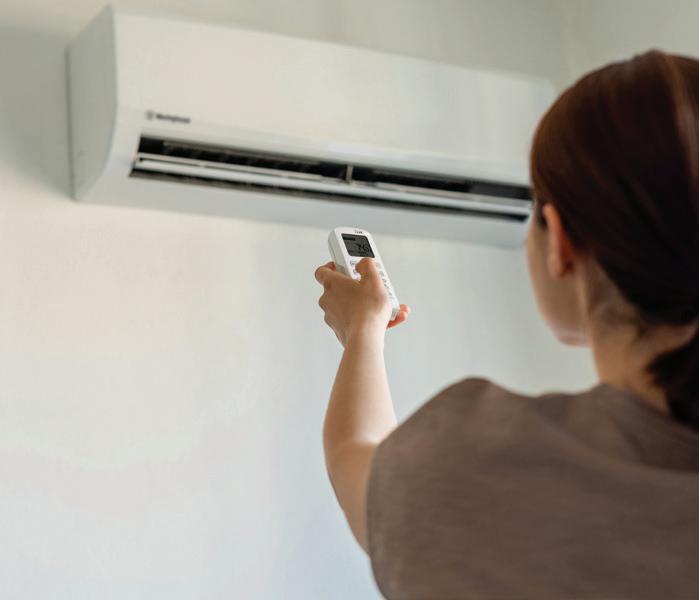















With nearly 50K attendees, the Big Show returned to Chicago with gusto, and an even sharper focus on decarbonization, refrigerants, efficiency and new technology.
The AHR Expo (International Air-Conditioning, Heating, Refrigerating Exposition) returned to Chicago for a lively week of learning in late January, as attendees, exhibitors, presenters and thought leaders gathered to reconnect, discuss and demonstrate new HVACR products and trends. Notable topics included all things decarbonization - from equipment on the floor to presentations in education programming - refrigerant regulation updates, the ongoing heat pump resurgence and the unveiling of many new products that are paving a greener path forward for the HVACR community.
“The industry showed up for business in Chicago,” said AHR Expo Show Manager Mark Stevens. “Throughout the year, we’ve followed discussions regarding regulation rollouts, decarbonization trends and various other tracks about the way we conduct business as an industry. It was evident in the halls that the professionals in attendance are primed to create solutions and drive business forward.”
To read the 2024 Trend Report, go to ahrexpo.com/2024-trend-report.
It was clear to anyone walking the McCormick Place Convention Center floor on the first morning of the show that attendance was strong. In all, AHR Expo welcomed 48,034 attendees who interacted with 1,875 exhibitors spread across North and South Halls. Maximizing 527,520 sq. ft. of space for booth displays, attendees gained access to all the latest our industry has to offer, including new products, technology, skills learning and demonstrations.
Additionally, the Podcast Pavilion hosted 20 podcasters covering

the latest topics happening across the industry. Podcasts were recorded and released by respective podcasters in the weeks after the show. Inside exhibitor booths, industry tradesmen, women and influencers hosted events, competitions and meet-ups, opening exciting channels of content creation and networking opportunities.
“There is a true line of two-way communication between the professionals in the field and the manufacturers creating products and technology,” said Nicole Bush, AHR Expo director of marketing. “Having an in-person forum like AHR Expo to strengthen the social relationships formed online is proving to be immensely beneficial to our industry.”
The 2024 Education Program highlighted a wide variety of topics. Among the most popular and insightful sessions was the HVACR State of the Industry Panel , which discussed decarbonization trends , heat pumps, artificial intelligence (AI), refrigerant regulations, and
next-generation recruitment. Panelists included ASHRAE President Ginger Scoggins ; HARDI CEO Talbot Gee ; AHRI President Steve Yurek ; National Comfort Institute CEO Dominick Guarino ; ASHB CEO Greg Walker ; and moderator Bryan Orr, co-founder and president of HVAC School and Kalos Services.
Regarding heat pumps, Gee noted that there was still hesitation in the market. “Contractors need to be the authority on the technology; they’ll be heroes if they take that on,” he said.
Orr added, however, that heat pumps require a different skill set, making them a “big lift” for some contractors.
Moving to AI, Guarino said that contractors “blindly rely” on building controls. So training is crucial in this area to ensure that building controls with AI use good information; verification is critical to this process, he added.
“Engineers design complicated systems with building controls,” noted Scoggins. “Commissioning agents should be documenting these systems so contractors don’t scrap the design and install what they want.”





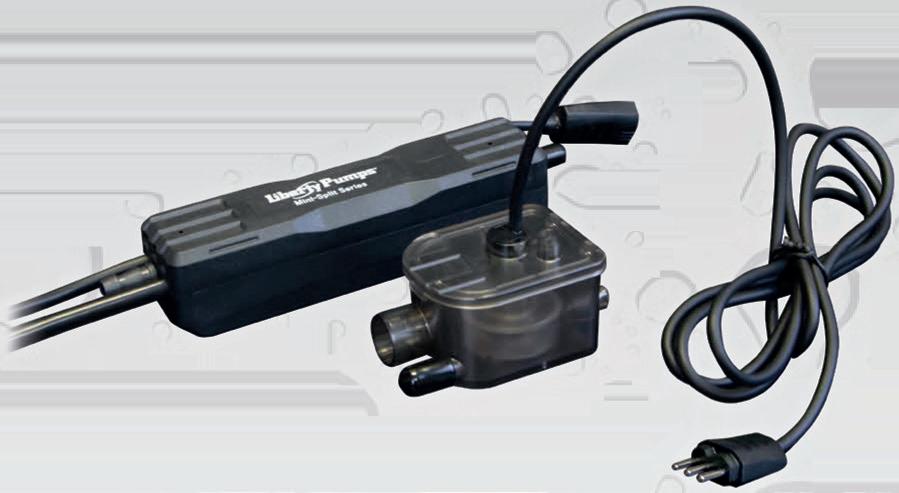








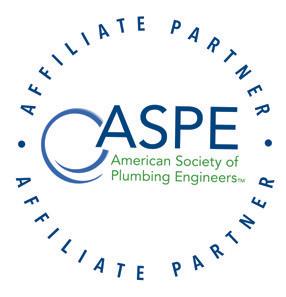
Switching to the refrigerants market, Gee noted that the date for the U.S. transition to mildly flammable A2L refrigerants had been extended for a year. So, Yurek observed that the need to reclaim today’s refrigerants now was needed even more to ensure customers are not left hanging at the end of the year, when R410a is no longer to be used.
“Refrigerant reclamation is important to serve your customers and the environment; there is value in that refrigerant,” he said.
On the topic of workforce development, Guarino said the industry needs more nontraditional training and “fasttrack” programs to get more HVACR technicians into the industry sooner to help customers ASAP. He also noted that many HVAC schools have old equipment. So Guarino suggested that manufacturers donate more new equipment, so students can learn with the latest technology before starting their careers.
The Coming Disruption of A.I. Other panels also focused on Artificial intelligence (AI), an emerging technology of which many are wary. However, for contractors and engineers, AI can help with the office processes that no one likes to do, such as answering afterhours calls, outbound dialing, and helping with overflow.
“AI is not to replace staff but to enhance them,” said Joshua Crouch, co-host of Skilled Trade Syndicate’s Service Business Mastery podcast.
Crouch and podcast partner Tersh Blissett said that they have used many AI apps and software and believe AI can help contractors to be more productive. For instance, Blissett noted that AI can produce robust reports on service call management, monitor equipment remotely, and analyze data.
However, users must be aware of what information they are sharing in the AI space, he added. “Thoroughly review the vendor’s privacy policy, and examine your company’s cybersecurity systems to ensure you are protected,”
Blissett said. And firms should always review all AI-written content; this is especially true when having AI respond to negative reviews online, he added.
Both speakers stressed that contractors should start learning about AI and how it can be used in their businesses ASAP. It is not a fad and it is not going away, they said.
“Our industry evolves at a glacial pace, but it’s exciting to be at this new precipice of AI,” noted Stephen Holicky from Tridium, speaking in a separate technology session. Moderated by ASHB’s Walker, the panel included Chad Langston of ABB; Charles Pelletier of Distech Controls; Darryl DeAngelis of Ebtron, and Anto Budiardjo of PADI.io.
“If we want to move forward [with AI], we have to do more than the minimum in standards,” DeAngelis said.
For those worried about AI taking their jobs: “AI is not going to replace people who know the buildings,” Langston noted. “The human element is still needed.”
Budiardjo agreed. “Remember, it is a tool to help us,” he said. Added DeAngelis, “AI can help fill jobs and make companies more efficient.”
Indeed, predictive maintenance is already a key driver for those using AI in buildings, allowing systems to work more efficiently, the panel noted.
Across from the packed exhibit halls, ASHRAE’s Winter Conference proceeded apace. President Scoggins shared updates pertaining to the Society’s current theme, Challenge Accepted: Tackling the Climate Crisis, during her State of the Society address.
“We built on a declaration to be a collective body of problem solvers in tackling the global climate crisis,” Scoggins said. “ASHRAE regions and chapters showed an exemplary commitment not only to understanding how climate change affects building planning, design, construction and operation,
but they volunteered IMMENSE time and expertise to develop resources to support actionable, wide-scale building decarbonization practices. YOU recognized the challenge and YOU found ways to accept responsibility for making changes in your activities to make a difference. Big or small, all changes help our efforts and we appreciate you.”
ASHRAE also welcomed Dr. Carolyn Snyder , Deputy Assistant Secretary for Buildings and Industry for the U.S. Dept. of Energy. At the President’s Luncheon. Dr. Snyder spoke on ASHRAE’s building decarbonization leadership.
“I want to share my deep gratitude and appreciate from the DOE for all of the work that ASHRAE does and for your longstanding close partnership with our agency,” Snyder said. “Last November, our Deputy Secretary announced our new national building decarbonization strategy for the United States. We need to prioritize and center around equity, affordability and resilience – all key themes that we see throughout this conference and areas where you have been leading for decades. It’s going to require energy efficiency gains estimated at 35% by 2035 and 50% by 2050...
“Despite all the massive energy efficiency savings we have to date in our country, there’s so much more that we need to do to achieve these targets. It’s as if we wrote this blueprint looking at your conference agenda for this week. You are already leaders across those topics. What you’re doing here today in your organization is making a real impact for our country today. But more importantly, it’s making an immense impact in our buildings, in our communities, and in our homes for decades to come and for our children and grandchildren.”
The next AHR Expo & ASHRAE Winter Conference will take place February 10-12, 2025, in Orlando FL.




Going tankless is an even smarter choice with Bradford White®. Our Infiniti® GS & GR tankless gas water heaters are not only built to meet the demands of commercial and residential applications, they’re also an easy choice for the contractor.
• Cascade and common venting between standard and recirculation models
• Robust stainless steel heat exchanger for longer life
• Residential and Commercial applications
• Certified Green Product™ by the Green Restaurant Association


Expanding on his recent HPAC webinar, a mechanical expert details how best to comply with ASHRAE’s novel 2022 edition of the Standard 90.1 energy code.
By MACK WALLACE, PE, LEED APThe ongoing path to Net Zero Buildings has a long history with ASHRAE 90.1, beginning in 1975 with Title III of the Energy Conservation and Production Act (ECPA).
Of course, ECPA was published in response to the 1973 oil embargo, which had changed the way Americans thought about energy. When the cost of energy had soared, gasoline was rationed nationwide.
After several updates to the standard in 1995, Congress adopted 90.1 as the energy code for Federal Buildings and required states to adopt 90.1, or a code as restrictive, for commercial buildings and residential buildings taller than three stories.
Today, the purpose of ASHRAE 90.1 (2022) is to establish the minimum energy efficiency requirements of buildings other than low-rise residential buildings, for design, construction, and for development of a plan for operation and maintenance. Additionally, the purpose includes planning for utilization of on-site renewable energy resources.
Recently, ASHRAE set a goal for 90.1 to be a Net Zero Carbon Code by 2031. This means that even the worst building built in compliance with the 2031 code will be carbon neutral.
The 2022 code is the first step on the Path to Net Zero. The 90.1 committee


will take three more steps to reach that goal in 2025, 2028, and 2031. In 2031, the standard will require a building to reach the technical minimum energy use as calculated by RP-1631.
RP-1631 is an ASHRAE Research Paper written in 2016 by Jason Glazer, the head of the 90.1 Energy Cost Budget Committee. Glazer’s study determined the least amount of energy that could be
Based in Midlothian TX, the author, McHenry “Mack” Wallace Jr., PE, LEED AP, is Federal Practice Director for Mechanical Engineering at Jacobs and Executive Vice President of WiseWatt, LLC. He has been a licensed professional engineer for 48 years, with practical experience in mechanical systems dating back to the 1970s. Email: mack@wisewatt.com.

used in buildings in 2030 by employing commercially available methods without considering cost. The building would then need to have on-site renewables available to reach net zero. So, significantly, the 2022 standard is the first time on-site renewables have been required.
Personally, I have been a voting member on the 90.1 committee since the 1990’s and rejoiced with the committee when we issued the first ASHRAE Standard written in codeenforceable language in 1999. That was accomplished under the leadership of Ron Jarnagin, who later served as ASHRAE President (2011-12). I was also there when we ate cake and celebrated the 2010 edition, upon meeting the mandate set forth by the DoD and ASHRAE leadership, requiring the
2010 edition to be 30% more efficient than the 2004 baseline edition.
We accomplished that when Mick Schwedler rejoined the committee as chair to help us meet this ambitious goal. Mick, himself, later became ASHRAE President (2021-22), as well. Of course, I hope to be there in 2031 when we publish a Net Zero energy code.
ASHRAE 90.1 proposes to have a prescriptive path to Net Zero that will not require energy modeling. However, the 2022 edition introduces two new sections that do depend on energy models. They both use a form of the Building Performance Factor introduced for Appendix G in 2016.
Appendix G uses an independent baseline, drawn from standard practice; not completely based on the
proposed building systems. It also employs a stable baseline approach using a building that meets the 2004 code requirements. Using that baseline, energy performance of the proposed building must exceed savings in an amount commensurate with the code year being evaluated, as per the Building Performance Factor.
The approach of using a target model and a factor developed by the U.S. Dept. of Energy’s Pacific Northwest National Laboratory (PNNL) to compare to the proposed building modeled performance in Appendix G is now also used in the new Total System Performance Ratio (TSPR), and the new Section 11, Additional Efficiency requirements. This is a clear indicator of the future of 90.1.
Users have long been requesting a per square foot energy use goal, and TSPR is a major step in that direction. TSPR is defined as the ratio of the sum of a building’s annual heating and cooling load in kBtu to the sum of annual energy input of the building mechanical systems, where the input units are in accordance with Section L5. (L is a new Appendix that is used with TSPR.)
As the developers of TSPR have explained to the committee, a larger TSPR indicates a lower heating and cooling energy cost to meet the loads, and therefore can be considered a more efficient HVAC system. The annual heating and cooling loads include envelope loads, internal loads due to lights, equipment, and occupants, as well as ventilation and infiltration loads.
This metric provides a single evaluation criterion which addresses all components of the HVAC systems used to move heat and air into, out of, and within a building. It includes distribution system effectiveness, considers both full and part load performances and accounts for system controls. That differs from standard system efficiency ratings (such as seasonal energy efficiency ratio, coefficient of performance, or kilowatt hours per ton) that usually address only part of a system and fail to account for all the system inefficiencies that may be present within a building, as well as their interaction with building loads and ventilation requirements.
In addition, such component efficiency ratings are based on standard rating conditions that may not reflect actual building conditions and the climate of the building site. The HVAC System Performance approach accounts for all of these parameters to provide a comprehensive evaluation of a building’s HVAC system.
Significantly, the application of TSPR moves 90.1 toward using a system efficiency approach to code compliance and away from making minor prescriptive improvements in system components or controls. The TSPR is the ratio of heating and cooling delivered to cost (or other metric, maybe carbon) input. Since a larger proposed TSRP is required for compliance, the target is divided by a factor MPF.
There are 12 HVAC Systems currently included in TSRP and eight building types. Others will be added. To show
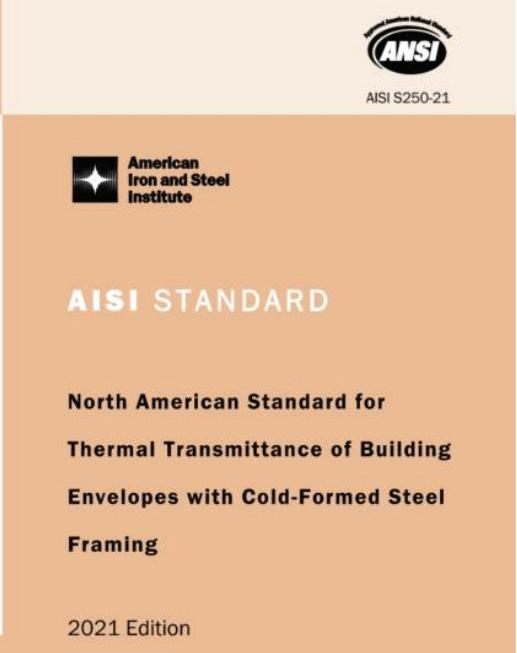
compliance, use online free software from PNNL; the same providers of ComCheck. This software promises to be much simpler than an Appendix G model. Go to: https://energycode.pnl.gov/staging/HVACSystemPerformance
For several years, the International Energy Conservation Code (IECC) has been requiring some additional energy savings measures on top of those in the code. Now, 90.1 will also require new measures with a somewhat different calculation method. By allowing the user to pick which added savings measures they will use, the methods do not have to reach the same high bar for inclusion as something that is a part of the standard everyone must comply with.
Even so, each project must achieve the total number of credits required in Table 11.5.1-1 (opposite). Each point represents about 0.1% of annual total building energy cost. So, 50 points is roughly 5% of annual total building energy cost.
Possible energy credits are listed by Climate Zone: E is for Envelope; H is for HVAC; W is for service Water heating; P is for Power; L is for Lighting; Q is for equipment; G is for load management. Choose the ones that fit the project for a total of 50 points. Again, the points allowance for these measures are from models developed by PNNL.
Part load energy use curves have been developed for the newly added Normative Appendix J, to produce more accurate models when the actual chiller curves are not available. Also, a new Informative Appendix I has been added to provide the math, allowing the requirements to be converted from cost to carbon-based.
This is the year of the bridge for the building envelope. A new American Iron and Steel Institute (AISI) Standard has been developed and, based on this document, eight new requirements for thermal bridging have been added to 90.1. The previously added requirements for air barrier made a major impact on buildings by reducing air leakage. So, expect the bridging changes to have a similar impact on heat loss through the envelope. The first requirements for wall reflectance were also added. These are only in Climate Zone 0, at least for now.
Section 9 now also includes requirements for horticultural lighting based on photosynthetic photon efficacy (PPE). Lighting and Power has generally lowered the lighting power allowances. For instance, an office building that was allowed 1 watt/ft2 in 2004 is now allowed 0.62 watts/ft2.
Section 10 can be used by any of the subcommittees and has included the list of systems that must be sub-metered. Of note, refrigeration has been added to the systems that must be sub-metered.
For the first time, requirements for elevator efficiency have also been added, based on the ISO efficiency classes. Elevators must be “E” or better per ISO 25745-2, so elevators are now regulated.
Also, compressed air became regulated in 2022. We do not regulate how it is used, but how it is produced, with requirements for controls, part load optimization for systems over 25 HP, leak testing, and pipe sizing, etc. Overall, the biggest changes in the code are the first requirements for on-site renewables.
For new construction or additions, the building site must have renewable equipment sized to generate 0.5 Wft2 or 1.7 Btu/ft2 times the gross conditioned floor area for all floors up to the three largest floors. Exceptions are made for buildings with new construction under 10,000 ft2, in locations with low solar gain; where the roof is full of other equipment; where the roof is shaded by objects that are not part of the building; or for other than new construction. This requirement will grow over the next three code cycles.
In sum, the 2022 edition is an important first step toward Net Zero in 2031. There are important changes to the code and some indications of the direction the committee will follow are given. Still, more changes are on the horizon, of course. Indeed, Net Zero offers a daunting challenge for the 90.1 Standard Project Committee, but we are up to the task.
All these years later, it has been a fascinating ride on the 90.1 Committee and I’ve been honored to play a small part in this journey.
Note: I am just one voting member of the committee and what I have presented here are my impressions, not that of ASHRAE or the 90.1 Standards Project Committee.

 By MICHAEL J. BULZOMI, AMCA International, Fire and Smoke Damper Subcommittee
By MICHAEL J. BULZOMI, AMCA International, Fire and Smoke Damper Subcommittee
Editor’s note: The following is adapted from the white paper “Ceiling Dampers Explained”1 by the AMCA International Damper Engineering Committee.
Ceiling dampers, woodtruss ceiling dampers, ceiling fire dampers, firestop flaps... Ceiling radiation dampers go by many names but serve one very important purpose: limiting the transfer of heat through HVAC penetrations in ceiling membranes (most commonly,
fire-rated acoustical ceiling tile or gypsum board) protecting the structural members of a fire-resistance-rated floor/ceiling or roof/ceiling assembly in the event of a fire. (Figure 1)
Selecting the proper ceiling radiation damper—even understanding if a ceiling radiation damper is appropriate—for a given application can be confusing. This article will explain how to determine the correct ceiling radiation damper based on the assembly used in construction.
The process of selecting a ceiling radiation damper depends largely on the
design of the floor/ceiling or roof/ ceiling assembly in which the ceiling radiation damper will be installed. ANSI/UL 263, Fire Tests of Building Construction and Materials2, defines test criteria used to evaluate entire floor/ceiling and roof/ceiling assemblies, as opposed to components of assemblies. If a floor/ceiling or roof/ ceiling assembly meets the test criteria, it receives a fire-resistance rating expressed in terms of hours, and its design specifications are added to UL’s Fire Resistance Directory (Product iQ).
Floor/ceiling and roof/ceiling assemblies requiring membrane protection can be tested to ANSI/UL 263 any of three ways (Figure 2):
Based in Houston TX, Michael J. Bulzomi is product manager, commercial dampers, for Greenheck Fan Corp., and chair of the Fire and Smoke Damper Subcommittee at the Air Movement and Control Association International.
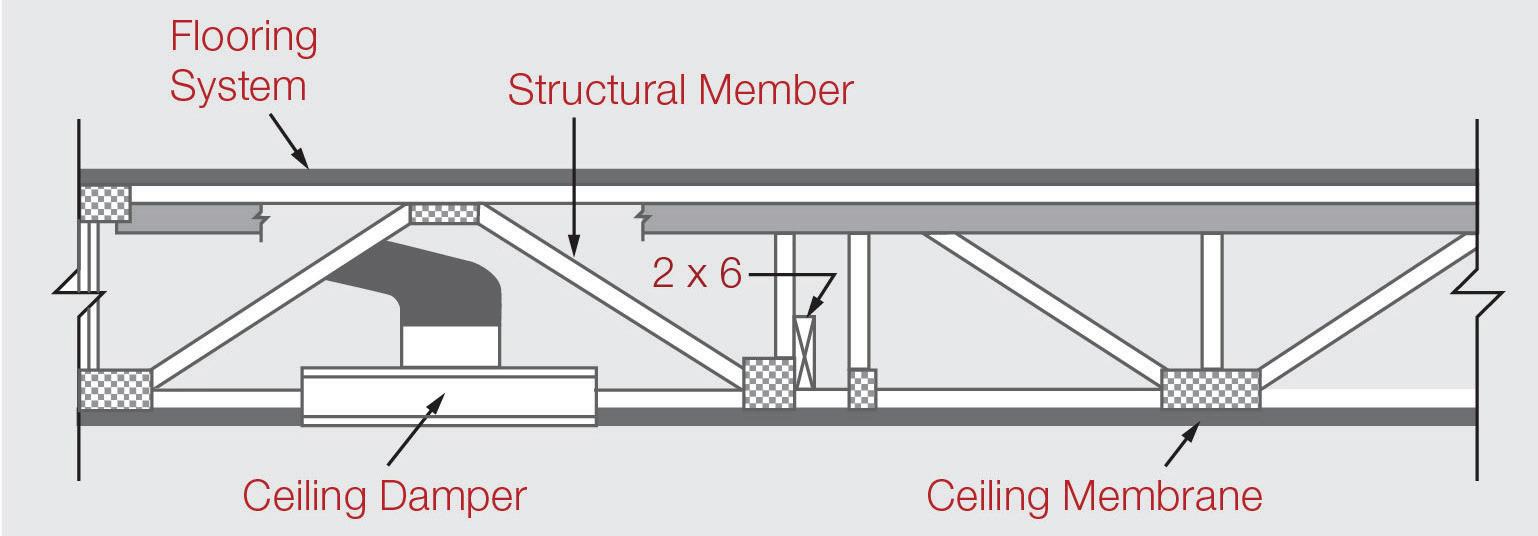
• Without ceiling radiation dampers: Installation of ceiling radiation dampers in assemblies tested without HVAC penetrations through their ceiling membranes is prohibited. If the use of ceiling radiation dampers is not called out in the construction details of an assembly in the Fire Resistance Directory, the design should not be specified for or used in applications requiring HVAC penetrations through ceiling membranes;
• With generic hinged-door-type dampers: A hinged-door-type damper is a design not specific to a given manufacturer. In ANSI/UL 263 tests of floor/ ceiling and roof/ceiling assemblies, it often is employed so as not to restrict the type of damper that can be used in the construction of a building. In actual building construction, however, it rarely is used. (Note: Standard ceiling radiation dampers tested to UL 555C, Ceiling Dampers3, are intended for use only in assemblies initially tested and listed with a hinged-door-type damper. Typical applications include fire-rated lay-in acoustical-tile ceilings in steeltruss assemblies rated for up to three hours of fire resistance);
• With manufacturer-specific damper models: When a floor/ceiling or roof/ceiling assembly is fire-tested with a manufacturer-specific damper, that damper model will be specified in the Fire Resistance Directory, and only that damper can be installed.
A company or an organization that contracts UL to conduct an ANSI/UL
263 test of a building element is the “sponsor” of the test and has final say on the products used in the design. Typically, damper manufacturers allow only their own models or models they produce and license for other manufacturers to be listed in designs they sponsor.
The result is that many damper manufacturers have their own floor/ ceiling and roof/ceiling design numbers in the Fire Resistance Directory, despite, in many cases, the construction of the test assembly, with the exception of the dampers—that is, the flooring system, structural members, gypsum board, etc.—being identical to that of other designs. This is what is known as a “proprietary” design. An “open” design is one for which any product that passes required testing can be listed by UL as approved for use.
According to the International Building Code (IBC) 4, ceiling radiation dampers shall comply with the requirements of UL 555C or be tested as part of a fire-resistance-rated floor/ceiling or roof/ceiling assembly, in accordance with ASTM E119, Standard Test Methods for Fire Tests of Building Construction and Materials5, or ANSI/ UL 263. Ceiling radiation dampers are not required to be UL-listed; other third-party agencies can test and certify dampers to the required standard.
For example, Intertek is Occupational Safety and Health Administration
(OSHA) Nationally Recognized Testing Laboratory (NRTL) Programrecognized to test products to the specifications of applicable product safety standards and can test and list a damper to an applicable test standard. It is not uncommon to see a ceiling radiation damper bearing Intertek’s Warnock Hersey or ETL Listed mark, which demonstrates compliance with the requirements of widely accepted product safety standards, as determined through independent testing and periodic follow-up inspections. The Warnock Hersey and ETL Listed marks include the same testing, listing, labeling, and follow-up-inspection services as competing certification marks, such as UL and CSA, and are accredited by the same organizations, agencies, and regulatory bodies.
The guidelines for UL directory listings apply for Intertek directory listings. Intertek typically lists products for use in specific applications, references specific UL designs, and tests for compliance with applicable UL standards, as required by the IBC.
An entire floor/ceiling or roof/ceiling assembly—ceiling radiation damper, truss, gypsum board, etc.—must be tested and listed to ANSI/UL 263 to be used in a specific application. Just as a UL 555, Fire Dampers-classified fire damper cannot be substituted for a UL 555C-classified ceiling radiation

damper, a UL 555C-classified ceiling radiation damper cannot be substituted for an ANSI/UL 263-classified woodtruss ceiling-damper assembly with the assembly’s UL fire-resistive rating maintained, if the damper was not tested and approved for the assembly.
Fire-rated floor/ceiling and roof/ceiling assemblies requiring membrane protection can be tested any of three ways:
• Without ceiling radiation dampers, in which case they are prohibited from being specified or used in applications requiring HVAC penetrations through ceiling membranes;
• With generic hinged-doortype dampers, in which case any UL 555C-approved damper may be installed;
• With a manufacturer-specific damper model, in which case only the damper identified in the listing agency’s directory may be installed.
All designs of combustible wood-truss or wood-joist floor/ceiling or roof/ ceiling assemblies permitting ceiling radiation dampers require the use of manufacturer-specific damper models. Dampers with only UL 555C approval may not be used in combustible assemblies.
When a rated floor/ceiling or roof/ ceiling assembly containing a manufacturer-specific damper model (e.g., a fire-rated wood-truss assembly used in multifamily construction) is used, cooperation between the project architect and the mechanical engineer in coordinating construction specifications of rated barriers and HVAC products is critical. If specific requirements of the HVAC system must be met, then the architect must be sure to specify the correctly listed assembly. Consulting with the local authority having jurisdiction
is recommended to ensure project requirements can be met and to discuss any installation concerns.
1. AMCA. (2018). Ceiling dampers explained. Arlington Heights, IL: Air Movement and Control Association International. Retrieved from https:// bit.ly/CDExplained;
2. UL. (2011). Fire tests of building construction and materials. ANSI/UL 263. Northbrook, IL: UL;.
3. UL. (2014). Ceiling dampers. UL 555C. Northbrook, IL: UL;
4. ICC. (2021). International building code (ch. 7). Washington, DC: International Code Council;
5. ASTM. (2022). Standard test methods for fire tests of building construction and materials. ASTM E119. West Conshohocken, PA: ASTM International.

Delivering more flexibility and power in less space!
6, 8 Ton
10 Ton
12, 14, 16 Ton

Get the ultimate in comfort integration with a high-capacity unified platform, for commercial and light commercial applications.
• Expanded outdoor unit capacity, from 6 to 36 Ton
• Larger single module outdoor units – up to 16 Ton
• Up to 26% less space with larger single module outdoor units
• Both Heat Pump and Heat Recovery operation available from one unit
• Increased number of connectable indoor units
• Extended ambient air temperature operating range from -15°F to 126°F
• Intelligent refrigerant control optimizes individual zone comfort






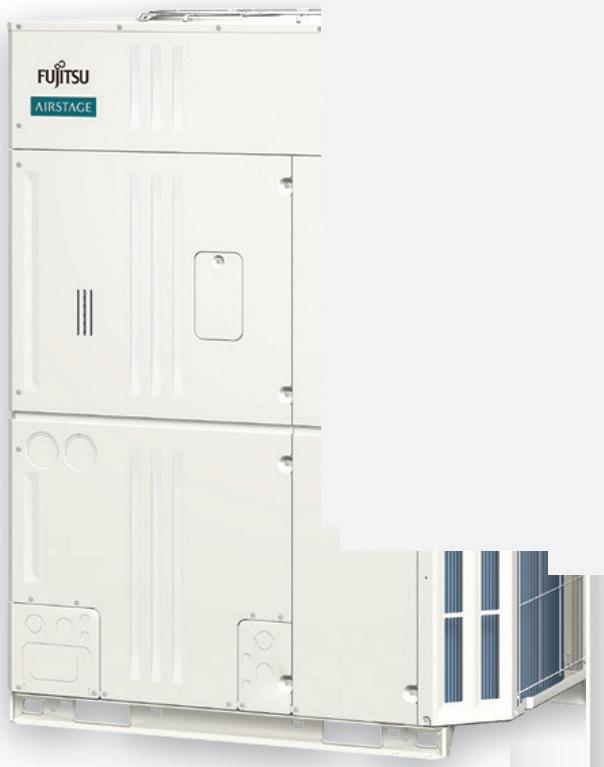










Unified VRF outdoor units allow for heat pump or heat recovery operation for the ultimate in application flexibility.
Boiler manufacturers are headed for the Rockies this May. ABMA’s Scott Lynch and Shaunica Jayson joined our podcast to tell us what attendees will find there!
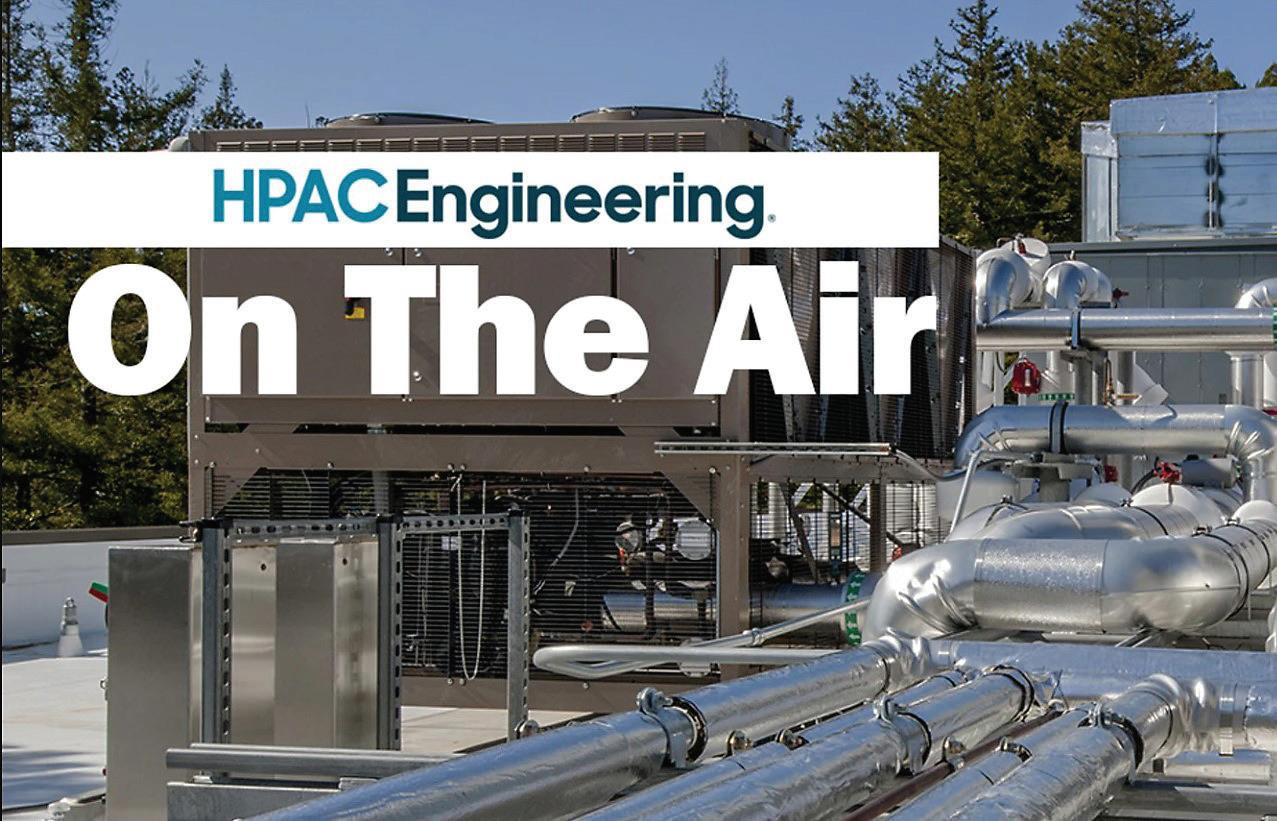
This spring, HPAC ‘On the Air’ welcomed back Scott Lynch, President & CEO of the American Boiler Manufacturers Association (ABMA), based in Vienna VA. He was joined by ABMA Director of Communications Shaunica Jayson Together, the pair updated us on the many activities the association now has underway and in the works, first and foremost, BOILER 2024.
HPAC On The Air: Scott and Shaunica, welcome back. It’s been a year since we last had you on the podcast. And at that time we spoke leading up to your big Manufacturing Conference. This time, we’re looking ahead straight at BOILER 2024 in Denver at the start of May. So please tell us a little bit more about that event and what attendees should expect to see there.
Scott Lynch: Thanks for having us back, Rob. We’re really excited about
BOILER 2024 and we’re ramping up at a rapid pace. At this point, we’re less than two months out from the event. As many people who listen to this podcast probably know, we launched BOILER 2022 as a first-ofits-kind event two years ago, a trade show and conference focused on the entire boiler supply chain. That had never been done before.
We had had this thought that we have events that we go to where the boiler industry is a piece of it, but it’s not the full breadth of the event. So, can we create an event that brings the entire boiler supply chain together? From the boiler manufacturer, all the way to the end user? An event that brings attendees in and gives them training, gives them opportunities to engage with all the various manufacturing companies?
Two years ago, we had a great event the first time in Dallas at BOILER 2022. For that, we had about 950 attendees and 75 exhibitors. But today, we’re going into
BOILER 2024 in just eight weeks, and we already have 105 exhibitors, plus a huge increase in new members and exhibitors. In addition, we are tracking well ahead in terms of attendees, as well. So, the momentum is there. The excitement is there. Our members are promoting it. It’s going to be a great event and build on what we did before. Shaunica can speak a bit more on the promotion aspect.
Shaunica Jayson: Thanks, Scott. And thanks, Rob, for having me back. I’ll just touch a little bit on what we did differently this time. We’re trying to grow the show, trying to improve and make things bigger and better. So this time, some of the things we are really touting about Denver is that this is a much larger expo hall. As Scott mentioned, we have more exhibitors and we have different sizing options. This time we’re also having a shuttle that will pick up attendees on the afternoon of May 1st, and the morning of May 2nd. So that’s a new feature.
Our goal is to bring people together to have a full boiler experience.
—Scott Lynch, ABMA President
We also will have boiler room tours. We weren’t able to do that last time because we were coming out of Covid. But this time, we will have boiler room tours of the Gaylord Rockies Resort, and also at Denver International Airport. So, we’re doing some really neat things. We’ll be having a Members Only lounge, and a Recharge and


Relaxation Station. Food functions in the exhibit hall that will help us keep everyone there as much as we can. And the Mobile Boiler Parking Lot is back. But this time it’s adjacent to the exhibit hall and it will be much larger than what we had in Dallas. Scott, would you like to talk about that?
Lynch: Well, the first time we did the mobile boiler lot, it was because we were just coming out of Covid and trying to figure out how we could get our attendees to see more of a boiler room. So we needed to do that because we didn’t have any other options. But now we’ve actually expanded, so it’s not just going to be the equipment of the mobile boiler companies. There’s also going to be auxiliary equipment there that you can also rent. I think we’re going to have an ammonia tank and some other things, as well, plus numerous sizes of mobile boilers in
the parking lot. So our goal is to bring people together to have a full boiler experience. We’ll have educationrelated topics on things like hydrogen for the boiler industry, on how to purchase a rental boiler, and many other topics. From taking tours to being on the exhibit floor, the experience will be all in one. That’s kind of the goal here.
HPAC: Looking back at BOILER 2022, it sounds like you’ve already made a number of adjustments. How did you go about learning from that inaugural event?
Lynch: Well, we got attendee and exhibitor feedback from surveys and just word of mouth from people attending. But the main thing that drove this was that we have an amazing advisory committee, which is led by Eric Graham from Webster Combustion. And this committee really
helped us to brainstorm what customers are going to want to hear, what they’re going to want to do. So we’ve been bouncing ideas off of them.
Immediately following BOILER 2022, we brought that whole group back together, about 15 to 20 people on the advisory committee. We tried to get various levels of people within their companies and across all the product areas, and they gave us feedback. This is what worked... This is what didn’t... Can we do this differently?... Can we do that differently?... Then we also had a brainstorming session just for the new show, where we said, “These are the ideas from staff based on what we learned. What are the ideas that you have in this room?”
Six months before the event, we also brought them to the location, walked the site, and then asked them, “OK, what do you guys think? How do we reengage?” Based on their answers, we

changed up our receptions completely this time because we realized that there was a desire among our attendees


to have flexibility, to bring people together in more casual settings, and then again in group settings. So the advisory committee was a huge help with all of that.


HPAC: Your BOILER 2024 keynote speaker is a bit outside the box. Please tell us more about that.
Lynch: Well, Shaunica was instrumental in making that happen, so I’ll let her answer.
Jayson: Thanks, Scott. Yes, we’re really excited about the speaker. His name is Travis Mills and he’s a retired U.S. Army Staff Sergeant and “a recalibrated warrior.” He’s also a motivational speaker, actor, author, and a big advocate for veterans and amputees. He, himself, is a quadruple amputee. So we had looked around and tried various speakers, but Travis came to us through some recommendations and we just felt like his story was so touching and so moving. His motto is, “Never Give Up. Never Quit.” And we felt like that really applies to anyone and everyone, no matter what job you hold, no matter what industry you’re in. So, we really felt like his story is going to motivate and really touch our attendees.
Lynch: Granted, it’s not a boiler-related presentation. But the way that we looked at it was is that you wanted a keynote speaker who was going to be uplifting and who was going to be motivational and kind of set the tone for the event. Attendees are going to hear plenty of boiler presentations in Denver. So having one session where they also hear a great story like this is something I think people will really enjoy.
Jayson: Just touching back for a moment to some of the feedback that we had gotten and things that we are doing differently this time. We’re also really excited because this time we felt like we should expand and have more panels. And that kind of spurred our ideas to do an industry leader panel and also a Women In the Boiler Industry panel. So Scott, do you want to touch on the leadership panel?
Lynch: Sure. So, we were looking at the agenda and asking, ‘Where can we add some value?’ And initially on the second day, we didn’t have any event where we bring everybody together in a general session form. And the one feedback that we received was they want to learn more about what’s going on in the industry, not just specific topics within the educational sessions. So we’re pulling together leaders of the industry. I think we’re going to have about four panel members, and we’re going to do a trends presentation and kind of a discussion more of a Q&A about what’s going on in the sector. And we’re going to be announcing our speakers for that soon.
We’ll have different leaders from different parts of the sector and really dive into topics like what are they seeing for the future, what are they seeing now? What has changed over the last couple of years to give people some more insights on the flow of our industry and where we’ve come to and where we’ve been. And so that’s a new feature that will be on that second morning. We think it will certainly enhance the attendee experience.
HPAC: Shaunica touched on this before, but please tell us more about the Women In the Boiler Industry initiative that ABMA has just launched. How has WIBI come about?
Jayson: Sure. It’s funny, but when you mentioned feedback before, that’s what happened here. I had two people approach me at BOILER

We’re really excited about the keynote speaker, Travis Mills. We really feel like his story is going to motivate and really touch our attendees.
—Shaunica Jayson, ABMA Director of Communications
2022, asking where are the women’s events? And that got me thinking, “You’re right.” You see so many of these shows now where they’ll have luncheons or special sessions that are targeted for specific groups. So I approached Scott and said, “What do you think about having a session or a panel of some sort that is focused on women in our industry?”
This hit me especially because just in my almost seven years at ABMA, I’ve seen the growth of more women in our industry, so it’s definitely a trend. Scott said, “Let’s do it.” So, last spring, we approached Nancy Simoneu of Groupe Simoneu. She is
ABMA’s current vice chair, and she loved the idea. She was on board and it kind of took off from there. So, we recently launched the logo and did a press release about WIBI, as you know.
But as we were thinking through it all, we also felt like we don’t want this just to be at one show. We want to take it offline and have it continue throughout the year. So we felt it was best to do that as a professional community. And then at all our various events, we can have WIBI functions, as well. So we felt that BOILER 2024 would be the perfect opportunity to have this inaugural WIBI event, which is going to be a luncheon and a
panel. Currently, I am moderating the panel and we will have four panelists, which we just recently announced.
The panel will include Nancy Simoneu, and Tricia Staible, president of Robinson Fans and an ABMA board member, plus Kimberly Adkins, chief boiler inspector for the Commonwealth of Virginia and the only female U.S. chief boiler inspector, and Teresa Melfi, a Lincoln Electric Technical Fellow who holds over 50 welding patents.
So this group of women are trailblazers for our industry. There’s lots of information that they will be able to provide to anyone in attendance about some of their struggles, how they got to where they are now. We are just finally giving them the opportunity to tell their story.
Lynch: I was passionate around this for two reasons. One is that we all know that manufacturing has to diversify its recruitment. We have to be looking other places beyond our normal avenues, and this is one way that we can start looking at that. And if we can show successful women in the industry, hopefully it will motivate other women to join.
Also, I think that they can show us their career paths, too. They’re not just showing us their one job. They’re saying how they got where they are now and who helped

to get them there. That’s where I thought, ‘Wow, this is really cool.’ And I think that many people still don’t even believe that we have a lot of women in this industry or that it is a growing area. But it really is.
So this new WIBI initiative will help people to realize that growth and it will even allow us to celebrate it.
HPAC: In the same vein with Next Generation outreach, I recall ABMA had several local students in Dallas attend BOILER 2022 a couple years ago. This year, I believe you have students coming from Pickens Technical College in Aurora, Colorado. And as I understand it, they are building something special for this event. Could you talk to us a little bit about that?
Lynch: Sure. After the last event, we talked with our advisory committee and everybody was just throwing out ideas and saying, well, what if they did a project for us? Or what if we gave them some challenge to complete for the show? What can we do?
And so we were all in the room with two of the instructors from Pickens who had come to our advisory committee meeting. At one point, of them asked “What if they made a BOILER 2024 logo for you, and welded it and brought it to the show?” We said, “Yeah, that might work.”
And so the students at Pickens actually are doing that now. The machining class and the welding class are building a ‘BOILER 2024’ logo out of metal aluminum and other parts. Some of our local members supplied the materials and we will display the finished product somewhere at the show. We’re not sure where yet.
Jayson: Actually, I think the HVAC program is involved, too.
Lynch: Yes, I think so. But what was also cool about this is that not only are we giving them a project where they’re learning how to weld and learning how to machine and doing some things that maybe they don’t normally do in class. They’re also going to be able to come to our event and display their work and be proud of what they’ve accomplished. So they’ll be there displaying their work, networking with the other manufacturers for jobs and internships, but it’s another way to engage the next generation students. And we’re trying to expand that and figure out what the next steps are for that in the future.
So it’s just one more way that we’re trying to expand the impact of BOILER 2024 and including the next generation, getting some students interested and excited about us as we go from city to city each time. That’s truly another step in the right direction, we think.
For much more, visit www.BOILER2024.com.
Boiler manufacturers group announces new round of annual awards for rising students.
The application for the 2024 Randy Rawson Scholarship is now available. Awarded annually, the Rawson scholarships continue to recognize deserving students with technical career aspirations in boiler engineering and fabrication.
For 2024, ABMA is accepting online applications, accessible below. Responses are due May 15
Named after the former longtime president of ABMA, the scholarship program was created for the Promotion of Careers in Boiler Engineering and Fabrication. A special fund has been set aside to support the scholarship program and is operated exclusively for charitable and educational purposes. The specific purpose of the fund is to support post-secondary education and/or training of graduating high school students pursuing careers in the commercial, institutional, industrial or power-generating boiler, combustion and related equipment industry, through educational scholarships.

following: one should be from an educational institution representative (e.g. high school principal, professor, advisor etc.) and one from an executive at a sponsoring company or individual familiar with the student’s community or public service. Parents can be sponsors but cannot offer recommendations;
• Acceptance letter from a nationally or regionally accredited post-secondary college, university, or similarly accredited community college, vocational, trade or technical school. (High School and Transfer Students Only);
• SAT or ACT scores. (High School Students Only);
• Personal Statement.
For more, visit abma.memberclicks.net/ rawson-scholarship or contact Tyler Vollmer, ABMA Membership Engagement Manager, at tyler@abma.com.
The number and amount of scholarships awarded are determined by the ABMA Board of Directors. In 2023, ABMA awarded 10 scholarships and, to date, has now given out almost $265,000 since its inception.
An eligible student must be full-time and be enrolled in, or has been accepted by, an accredited, post-secondary institution of higher learning or similarly-accredited community college, vocational or trade/technical school and has a high school diploma or General Education Development (GED). The applicant must be a relative of an employee of an ABMA member company in good standing or sponsored by an ABMA member company.
No applicant for a fund scholarship shall be discriminated against on the basis of sex, race, religion, national origin, sexual orientation, or citizenship.
Incomplete applications will not be accepted and applications that do not comply with all instructions will be negatively impacted during the review process. Applicants must submit:
• Scholarship application;
• Complete school-issued high school or college transcript (whichever is applicable);
• Two (2) letters of recommendation from among the


Airthings launches Ventilation Rate, a new feature that aims to help optimize a building’s ventilation system — part of the Airthings for Business Solution. It offers two virtual sensors that measure the estimated Air Exchange Rate (measured as air changes per hour) and Airflow (currently available in API only) in a specific room or space — indicating how often room air is replaced with fresh air each hour. Higher air exchange rates correspond to better ventilation, improving indoor air quality and reducing risk of transmission of airborne viruses. Enables optimization of ventilation systems to minimize energy consumption while providing healthy indoor air.
Airthings
SPX Cooling introduces OlympusV Adiabatic Systems, designed to provide a flexible cooling solution for operators and engineers of commercial refrigeration, industrial refrigeration, HVAC or industrial process systems. The series consists of Recold OlympusV CO2 cooler, Recold OlympusV condenser and Marley OlympusV fluid cooler. The CoolBoost Opti AD control panel allows operators to choose between Water Conservation Mode and Energy Conservation Mode, each of which prioritizes savings of the associated onsite resource during peak cooling loads. Other design features include electronically commutated fans stainless-steel coils and a recirculating water distribution system designed to help improve performance and reduce scale.
SPX Cooling Tech
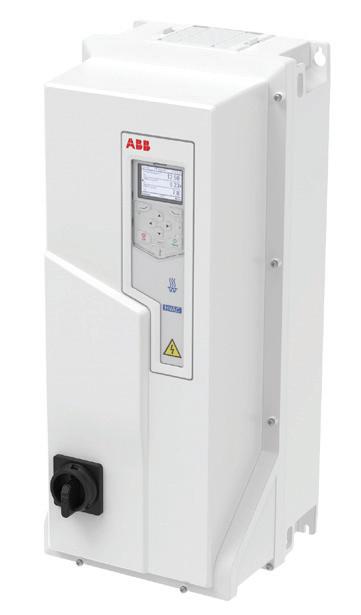

The ACQ580 4X variable-frequency drive from ABB is purpose-built for the water and wastewater industry. It withstands extreme rain, heat, cold, salt spray and dust, making it ideal for use in demanding water and wastewater applications. The variable frequency drive is fully sealed and weather tight, offering corrosion resistance in pump stations, clarifiers, surface aerators, flocculators, dosing and activated sludge removal. Employs water industry-specific software features and settings. Comes with a standard Bluetooth control panel, facilitating seamless and secure connectivity, commissioning and monitoring through ABB apps Drivetune and Drive Composer. Available in multiple power ratings. ABB
Worksport will use Infineon Technologies’ GaN power semiconductors GS-065-060-5-B-A in the converters for its portable power stations (Solis and COR) to increase efficiency and power density. The power converters will be lighter and smaller in size with reduced system costs. Infineon will support the optimization of circuits and layout design to further reduce size and increase power density. Worksport’s COR battery system can be integrated into a pickup truck or recharged by any solar panel or wall outlet. By replacing the former silicon switch in the power converter with GaN power semiconductors and operating the transistors at higher switching frequency, the battery system weight can be reduced by 33% and system costs by up to 25%.
Worksport


Leak Defense releases BuildAlert, allowing users to gain 24/7 visibility into their construction jobsite. It enables the ability to automatically turn off water in the event of a leak during and after working hours. With automatic controls, displays and alarms, users have easy access to essential functions whether on or off the jobsite. The system uses remote on/off capabilities accessible via a free PC or mobile app. Users can schedule automatic scene/mode changes after hours. Furthermore, the system maintains jobsite water pressure to help ensure a steady supply of water. For advanced integration and customization, the system offers an optional API for input/output signaling to remote systems, output alarms or building management/automation systems.
The Fisher Easy-Drive 200R electric actuator from Emerson are for Fisher butterfly and ball valves. These actuator/valve assemblies increase uptime, improve performance and reduce the risk of emissions posed by gas-operated systems locations. The unit calibrates itself when a user simply clicks one button using the free easy-Drive configurator software. Operates on 11 to 30 VDC power and consumes less than 0.4 watts when in the holding position mode. In the case of power loss, the unit can be driven to the user-defined position using its optional RPU-100 reserve power unit. Operates in temperatures as low as -40° F.
Emerson Electric Co.


Cotronics releases Thermeez 397PS insulating ceramic sticky tape, a highlyefficient, high-temperature, thermally insulating, woven ceramic tape backed with high temperature, pressure sensitive adhesive that’s easy to align and simple to apply. Woven from durable, flexible, industrial-grade ceramic fibers with excellent chemical stability and resistance to thermal shock, corrosive attack, mechanical vibration and stress. The tape products are user-friendly and, unlike fiberglass, nonirritating to the skin. They are nontoxic and will not burn. Packaged in easy-to-use, job-sized rolls: 1, 2 or 3 in. wide and 25 ft. long. A sample kit containing 1/32-in., 1/8-in. and 1/16-in.thick, 2-in. wide by 5-ft. long rolls is available.
Cotronics Corp.
Marley offers its Berko HUHAA unit heater in ready-to-install PRO Series bundles that include the SmartSeries Plus thermostat and B10 mounting bracket, allowing for easy mounting and flexibility in controls and integration. The thermostat connects to BACnet MS/TP building management systems for easy control and monitoring. Bundles also include a 24VAC transformer for immediate connection to a low-voltage thermostat or for future integration flexibility. Ideal for new or replacement applications in factories, warehouses, garages, power stations and mechanical rooms. Feature an advanced pull-through air-flow design that draws air across the heating element for even air distribution and cooler element operation.
Marley Engineered Products




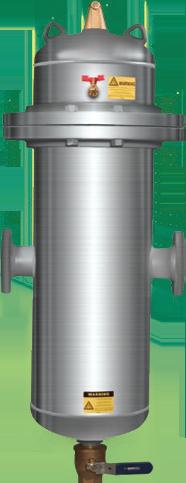

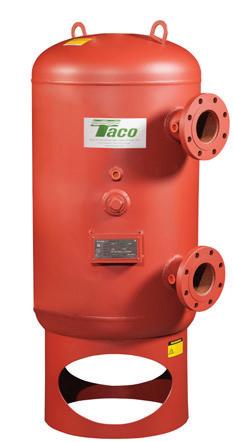












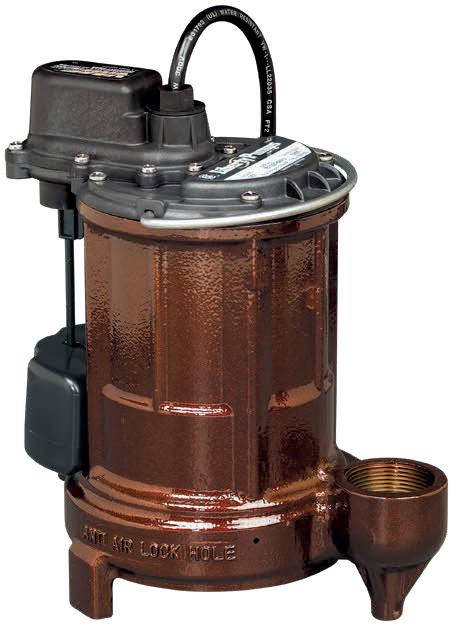











The creator of the ‘hockey stick graph’ had been smeared by two writers in 2012.

Larry Clark
A regular contributor to HPAC Engineering and a member of its editorial advisory board since 2012, the author is a principal at Sustainable Performance Solutions LLC, a south Florida-based engineering firm focusing on energy and sustainability.
Email him at larry@ sustainflorida.com.
First, let me apologize for dwelling on legal matters once again in this column. But I feel compelled to discuss another major case that many of us in the sustainability community that HPAC Engineering serves have been following for years
After more than a decade of dispute, a very significant defamation lawsuit was finally decided in February in the Superior Court of the District of Columbia. Initially filed in 2012, the suit was brought by Dr. Michael E. Mann, the Presidential Distinguished Professor in the University of Pennsylvania’s Dept. of Earth and Environmental Sciences. The defendants were Canadian writer and radio/TV host Mark Steyn and Rand Simberg, an analyst and adjunct scholar at the DC-based Competitive Enterprise Institute.
The long-running case had actually started as Mann PhD, Michael E. vs. National Review, Inc., et al. But two of the original defendants, National Review (which published Steyn’s posts) and the Competitive Enterprise Institute (which published Simberg’s), had their motions for summary judgment granted by the court in 2021. So both were dismissed from the lawsuit.
This year, however, Dr. Mann won big.
On Feb. 8, a six-person jury unanimously reached a verdict after a four-week trial and one full day of deliberation. According to The New York Times:
They found both Mr. Simberg and Mr. Steyn guilty of defaming Dr. Mann with multiple false statements and awarded the scientist $1 in compensatory damages from each writer. [But] the jury also found the writers had made their statements with “maliciousness, spite, ill will, vengeance or deliberate intent to harm,” and levied punitive damages of $1,000 against Mr. Simberg and $1 million against Mr. Steyn, in order to deter others from doing the same.
Dr. Mann is a highly respected climate scientist and author, named by Scientific American in 2002 as one of the world’s 50 leading visionaries in science and technology. He is perhaps best known as the father of the “hockey stick
graph,” a simple plot representing temperature over time. Its name comes from the shape of the plot points which resemble an upturned hockey stick. The “handle” corresponds to the relatively constant temperatures over the preindustrial era, and the “blade” corresponds to the dramatic warming that coincided with the industrial revolution.
According to Dr. Mann, “the ‘Hockey Stick’ graph became a central icon in the climate wars. The graph took on a life of its own.” When the Intergovernmental Panel on Climate Change used it in its 2001 report, it made global warming much more understandable to the public. (To see the graph, visit hpac.com/21282405.)
Since this case has finally been decided, I won’t go into the specifics of what the defendants had said about Prof. Mann and his research (although I found their comparison of Dr. Mann to a convicted child molester and former Penn State football coach to be repugnant). Simply put, Dr. Mann had contended that Steyn and Simberg had damaged him by publishing false and misleading comments about his work. The jury ultimately agreed.
Of course, some scientists and educators believe that the matter goes deeper than that, and that the defendants – and others – are really attacking the whole concept of anthropogenic climate change. So, had the defendants prevailed in this case, it could have had a chilling effect on what scientists say about this issue going forward.
Granted, journalists have a great deal of leeway when writing about public figures, which may include prominent scientists. But in this contentious and vitriolic age, it is reassuring to be reminded that the First Amendment still has limits. Its protection of free speech must not allow blatant misinformation campaigns that target anyone, much less climate scientists trying to aid our search for a healthier planet.
Hopefully, February’s verdict will send a strong message to climate change deniers who choose to personally attack the scientists, rather than factually challenge the science.



April
































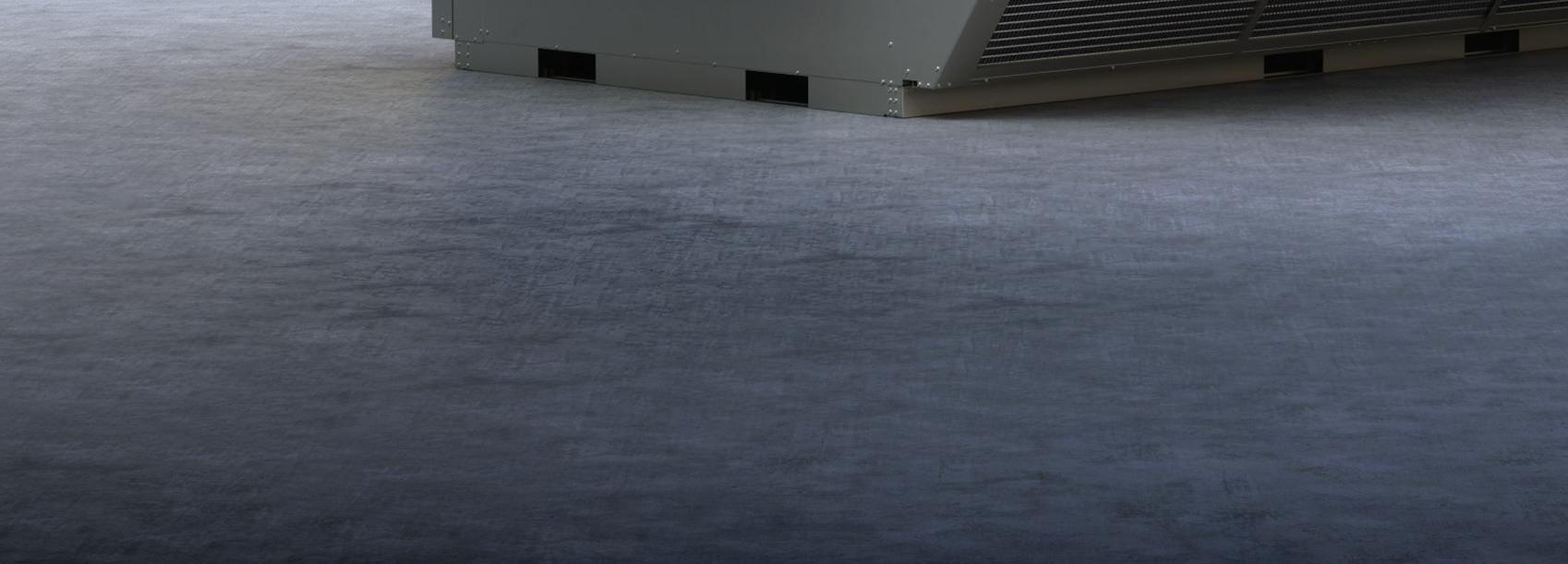
Our highest-performing solution ever, AAON Alpha Class empowers more people in more places to adopt cleaner, more efficient HVAC technology.

